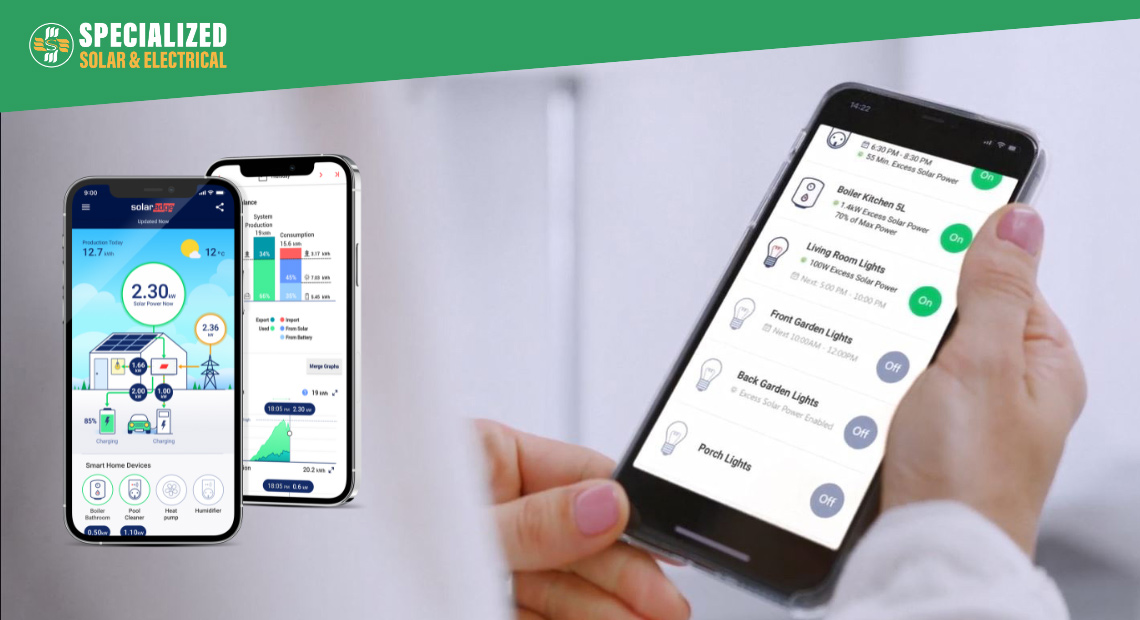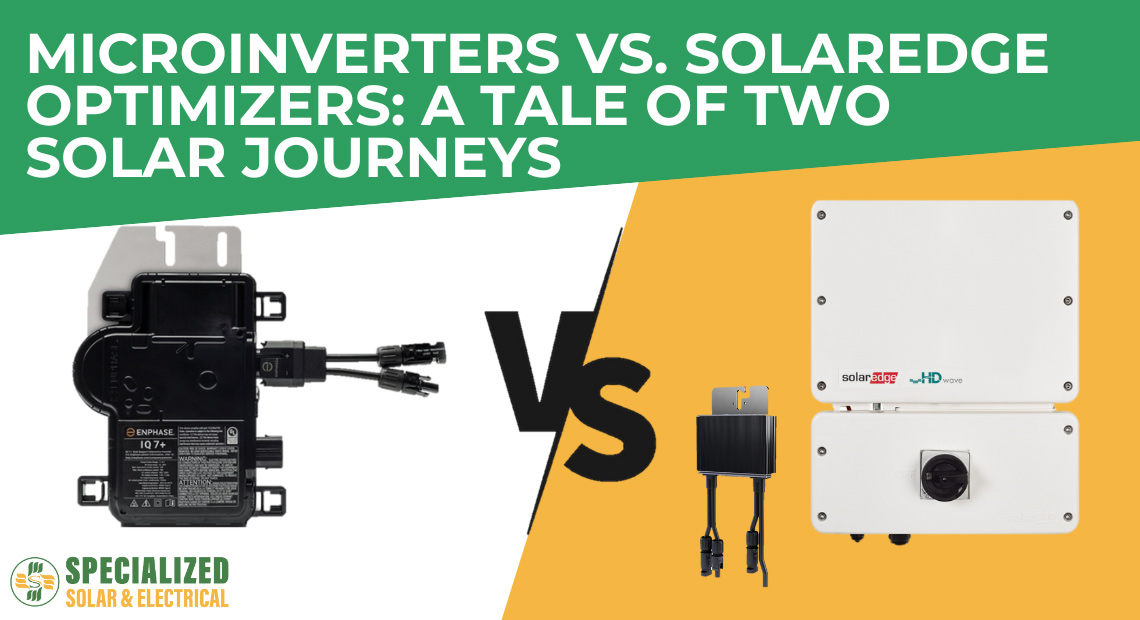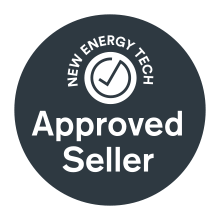In the realm of solar energy, the inverter plays a pivotal role, often described as the heart, soul, or brain of the system. Its function is to convert the direct current (DC) generated by the solar panels into alternating current (AC) that can be used by household appliances or fed back into the grid. But its role extends beyond this basic function.
The choice of inverter can significantly impact the performance, efficiency, and flexibility of your solar system. It influences how much solar energy is harnessed, how that energy is managed, and how the system can be expanded or adapted over time. The inverter also provides critical safety features and enables system monitoring and troubleshooting.
In essence, while solar panels may be the most visible part of a solar energy system, the inverter is its hidden powerhouse, quietly driving performance and value. Therefore, choosing the right inverter is as important as choosing the right panels.
In the next sections, we will explore the experiences of two different customers, each with a unique solar journey, to illustrate the impact of the inverter choice on their solar energy experience.
But before we dive into their stories, let’s start with a quick demonstration of inverter topologies. This video provides an excellent overview.
Customer A’s Solar Journey with Micro Inverters
Customer A, an average user with an appreciation for quality, decided on a micro inverter system for their solar setup. They purchased a standard 6.64kW system consisting of 16 x 415W Premium modules paired with individual micro inverters. The reasons for this choice were manifold:
- Individual Yield Extraction: The micro inverter system allowed for the extraction of yield from each module individually. This feature was particularly beneficial in combating issues such as shade and panel degradation, ensuring optimal performance of each module.
- Design Flexibility: The micro inverter system offered design flexibility, allowing for module placement on multiple roof facets. This flexibility enabled Customer A to maximise the use of their available space and optimise the system’s exposure to sunlight.
- Premium Product with Long Warranties: Customer A was drawn to the quality of the micro inverter system. The system came with a 10-year warranty, providing Customer A with peace of mind regarding their investment.
- Complete System Visibility: The micro inverter system provided complete visibility of the system, including the monitoring of each module. This feature allowed Customer A to track the performance of each module and the system as a whole, providing valuable insights into the system’s operation and efficiency.
- Enhanced Safety: Safety on the roof was enhanced with the micro inverter system. The design and installation of the system prioritised safety, reducing risks associated with rooftop solar installations.
In the next sections, we’ll explore Customer A’s realisations in the short to mid-term and long-term periods after their micro inverter system installation.
Short to Mid-term Realisations
In the early stages of their solar journey, Customer A started to notice some limitations with their micro inverter system. On the best of days, when the sun was shining brightly, the sky was clear, and a cool breeze was blowing, their premium 415W modules were unable to reach their full potential. The output never exceeded 366Ws, a limitation imposed by the peak output of the micro inverter plugged behind each module.
This was a surprising realisation for Customer A. They had invested in premium 415W modules with the expectation of superior performance. However, the micro inverters, despite their benefits, were limiting the modules’ production. Even under the most ideal conditions, when the modules could theoretically hit a maximum of 415Ws, the micro inverters would cap the output at 366Ws.
This limitation wasn’t just on a single module but was replicated across all 16 modules installed on the roof. Over time, this resulted in considerable losses, diminishing the overall efficiency of the system. It raised a critical question for Customer A: Was the investment in premium modules justified if their performance was being compromised?
Despite these challenges, Customer A found a silver lining. The monitoring app provided complete visibility of the system’s performance. On any given day, they could see how the micro inverters were managing the production of each panel individually. This allowed them to understand the system’s operation better and appreciate the benefits of individual panel management, even with the limitations in place.
Long-term Realisations
Two years later, Customer A became concerned about their increasing cost and consumption of electricity. They wished to be more self-sufficient and looked into the idea of buying a battery to store excess power and expanding their system.
Micro inverters offered design flexibility, theoretically allowing Customer A to expand their system. However, micro inverters do not allow for a direct connection between the inverter and battery (a DC Coupled battery solution). Therefore, Customer A’s only option was an external solution (otherwise known as an AC Coupled Solution).
One downside of an AC Coupled battery is that it comes with its own built-in inverter, solely dedicated to charging and discharging the battery. The size of this secondary built-in battery-inverter is generally around 5kWs.
This is where Customer A’s DNSP (the grid owner in the local area) got involved. Most DNSPs would state that the maximum inverter capacity you could install at a house is 10kWs. Unfortunately, Customer A happened to be in one of these zones.
At this critical crossroad, Customer A had to choose between adding a battery without expanding the system or simply adding more PV without a battery. They opted for the battery, as they were supplying enough excess power back to the grid during the summer.
However, come winter (starting May), Customer A realised that their production was barely enough to fully charge their battery. This went on from May to early October, nearly half of the year. This meant that nearly half of their battery’s lifespan, their $15K investment, was under-utilised.
A few more months down the track, Customer A ran a simple calculation on how much their panels produced as excess power versus how much power actually ran through their battery. They quickly realised there was a gap of around 10 to 15%. This is known as the triple conversion penalty, which you’ll pay every time you get an AC Coupled battery solution, further compromising the efficiency and yield of the overall system.
Furthermore, if Customer A wished to transition to an all-electric setup, perhaps drive an EV, they would need to rely on the grid to facilitate their increasing need for electricity. Also, they ended up with multiple platforms/apps to monitor various parts of their solar and battery system.
In the next section, we will explore Customer B’s journey with SolarEdge, a different inverter technology. Stay tuned!
Customer B’s Solar Journey with SolarEdge
Customer B, an average user with an appreciation for quality and functionality, decided on a SolarEdge system for their solar setup. They purchased a standard 6.64kW system consisting of 16 x 415W Premium modules paired with 16 Optimisers and a 8.25kW Homehub inverter installed on the ground. The reasons for this choice were manifold:
- Individual Yield Extraction: The SolarEdge system allowed for the extraction of yield from each module individually. This feature was particularly beneficial in combating issues such as shade and panel degradation, ensuring optimal performance of each module.
- Design Flexibility: The SolarEdge system offered design flexibility, allowing for module placement on multiple roof facets. This flexibility enabled Customer B to maximise the use of their available space and optimise the system’s exposure to sunlight.
- Premium Product with Long Warranties: Customer B was drawn to the quality of the SolarEdge system. The inverter came with a 12-year warranty, which could be extended to 20 or 25 years. Additionally, the optimisers behind each panel came with a 25-year warranty. These long warranties provided Customer B with peace of mind regarding their investment.
- Complete System Visibility: The SolarEdge system provided complete visibility of the system, including the monitoring of each module. This feature allowed Customer B to track the performance of each module and the system as a whole, providing valuable insights into the system’s operation and efficiency.
- Enhanced Safety: Safety on the roof was enhanced with the SolarEdge system. The design and installation of the system prioritised safety, reducing risks associated with rooftop solar installations.

In the next sections, we’ll explore Customer B’s realisations in the short to mid-term and long-term periods after their SolarEdge system installation.
Short to Mid-term Realisations
In the early stages of their solar journey, Customer B quickly realised the advantages of their SolarEdge system. Unlike traditional setups, the SolarEdge system was equipped with optimisers that allowed each solar panel to operate independently and at its maximum potential. This meant that every bit of sunlight captured by the panels was converted into usable energy, fully harnessing the yield of each panel.
One of the key decisions Customer B made was to opt for a larger 8.25kW inverter unit, installed at ground level. This decision proved to be beneficial, especially on days when all the panels were operating at their maximum capacity. The larger inverter could handle the peak output of all the panels, ensuring that none of the yield was compromised. This was a significant advantage over systems with smaller inverters that could potentially limit the output of the panels.
Customer B also appreciated the visibility provided by the SolarEdge system. On any given day, they could use their monitoring app to see how the optimisers were managing the production of each panel individually. This not only gave them insights into the system’s performance but also allowed them to identify and address any issues promptly.
What impressed Customer B the most was the system’s adaptability. Solar panels can be affected by various factors beyond a homeowner’s control, such as cloud cover, soiling, bird droppings, and panel degradation. However, the SolarEdge system was designed to handle these challenges. The panels in a single string could operate at their own pace, adjusting to the conditions and still maximising yield. Whether there was shade or no shade, the system could adapt and ensure optimal performance. This adaptability, combined with the system’s other features, made Customer B’s short to mid-term solar journey a rewarding one.
Long-term Realisations
As Customer B’s solar journey progressed, their needs and ambitions grew. The time came when they decided to purchase an Electric Vehicle (EV) they had always dreamt of. To support this new addition and mitigate their consumption from the grid, they planned to expand their PV system and connect a battery.
However, they had to consider the regulations set by their local Distribution Network Service Provider (DNSP). The DNSP had a maximum inverter capacity limit of 10kWs. But with SolarEdge, Customer B had more flexibility. They could choose between DC or AC coupled batteries.
To overcome the DNSP regulations and still get the best of both worlds, Customer B chose the path of the DC Coupled battery. Why, you may ask? With DC Coupled solutions, you can typically oversize the inverter up to 150% with most inverters. But with SolarEdge, you can go up to an outstanding 300%! This meant that even with the DNSP’s limit, they could still significantly expand their system.
Moreover, if they wished to add more PV at a later stage, they could mismatch modules and install on multiple roof facets using SolarEdge’s flexible design guidelines. This gave them the freedom to customise and expand their system as needed.
One of the significant advantages of a DC Coupled solution is the avoidance of the triple conversion penalty. The battery connects directly to the main inverter, allowing the battery to charge directly from the PV modules on the roof. This direct connection means no efficiency or yield is lost, ensuring more PV for the battery and better use of the battery over its lifespan.
To further increase their self-consumption from their PV and battery system, Customer B installed a SolarEdge EV Charger. This allowed them to charge their new EV directly from their solar system, maximising their renewable energy use.
Best of all, every single component of their system, from the modules to the inverter, battery, and EV charger, could now be monitored under a single platform; the MySolarEdge App. This gave them complete visibility and control over their entire solar ecosystem, enhancing their solar journey.
The Technical Aspects
While the user experiences are crucial, it’s also important to understand the technical aspects that differentiate these two inverter technologies.
Operating Voltage Range
Microinverters and power optimizers, like those from SolarEdge, both aim to maximise the energy production of individual solar panels in a system. However, they differ in their operating voltage ranges (determines how quickly your system wakes up and how long it stays up for) and how they handle the conversion of DC power from the panels to AC power for your home or the grid.
Microinverters convert the DC power to AC power right at the panel level. Each microinverter operates within a specific voltage range, which is determined by the characteristics of the individual panel it’s connected to. This means that the operating voltage range can vary across different panels in the system, depending on factors like shading or panel degradation.
On the other hand, SolarEdge’s power optimizers adjust the output of each panel to maintain a fixed string voltage, ensuring the inverter operates at its peak efficiency. This allows the system to start generating power earlier in the morning and continue later into the evening, compared to traditional inverter systems.
In terms of operating voltage range, SolarEdge systems typically have a wider range compared to microinverters. This can result in a longer operating time each day, potentially leading to higher overall energy production.
Operating Temperature
The operating temperature of a typical solar module is 85 degrees Celsius. Optimisers mirror the modules in this respect, maintaining their performance even under these high temperatures. Micro inverters, however, cannot handle operating temperatures higher than 65 degrees Celsius. This limitation can lead to a derating of the system’s performance on hot summer days.
For example, consider a hot summer day where the temperature of your solar modules reaches 85 degrees Celsius. If you’re using a micro inverter system, the inverter’s performance will start to decrease once the temperature goes above 65 degrees Celsius. This means that even if your solar modules are capable of producing a certain amount of power, the micro inverter won’t be able to convert all of it, leading to a loss in energy production.
On the other hand, if you’re using a SolarEdge system with optimisers, the optimisers will continue to operate effectively even at the higher temperature, ensuring that you get the maximum possible energy output from your solar modules.
Why Compromise What You Paid Extra For?
A key characteristic of a premium module is its ability to perform well in extreme weather, including hot summer days and gloomy winter days. If you’ve paid extra for a premium module, you’d naturally want to extract the maximum possible performance from it. By choosing an inverter technology that can handle the operating conditions of these premium modules, you ensure that you’re not compromising on the performance that you paid extra for.
The Future of Inverter Technology
As we look towards the future of inverter technology, SolarEdge stands out with its unique topology. By splitting the two primary functions of a typical inverter, SolarEdge provides all the benefits of Module-Level Power Electronics (MLPE) and goes a step further by offering access to both DC and AC power. This innovative approach opens up a world of possibilities for homeowners.
With SolarEdge, homeowners have access to a broader range of home energy management solutions. They can choose from various options based on their unique setup and requirements. Whether it’s optimising solar panel output, managing energy storage, or integrating with home automation systems, SolarEdge provides the flexibility and control homeowners need to make the most of their solar investment.
Moreover, SolarEdge offers more flexibility to scale your system. On the roof, you can add or rearrange PV modules as needed, thanks to the individual optimizers. At ground level, you can expand your storage and energy management solutions without being constrained by the limitations of traditional inverters. This flexibility makes it easier to adapt your system as your needs change over time.
But perhaps one of the most significant advantages of SolarEdge’s unique topology is its ability to adapt quickly to meet new regulations, market trends, and consumer needs. As the solar industry evolves, so do the rules and requirements that govern it. With SolarEdge, you can be confident that your system will be able to adapt and comply with these changes, ensuring your investment remains viable and beneficial in the long term.
In conclusion, the choice of inverter can significantly impact the performance, flexibility, and scalability of your solar system. It’s not just about converting DC power from your panels into AC power for your home. It’s about managing and optimising your energy, adapting to changes, and preparing for the future. So, when choosing an inverter technology for your solar system, it’s crucial to consider these factors and choose a solution that meets your unique needs and requirements. With its innovative approach and forward-thinking technology, SolarEdge offers a compelling choice for the future of solar energy.
Take the Next Step Towards Energy Independence
Are you ready to embark on your solar journey? Are you ready to harness the power of the sun and transform the way you use and manage energy? If so, reach out to us today. Our team of solar experts is ready to guide you through the process, helping you choose the right system for your needs and ensuring a smooth and successful transition to solar energy.
Remember, the future of energy is not just about consumption; it’s about management, optimisation, and sustainability. Let’s shape a greener, more sustainable future together.












